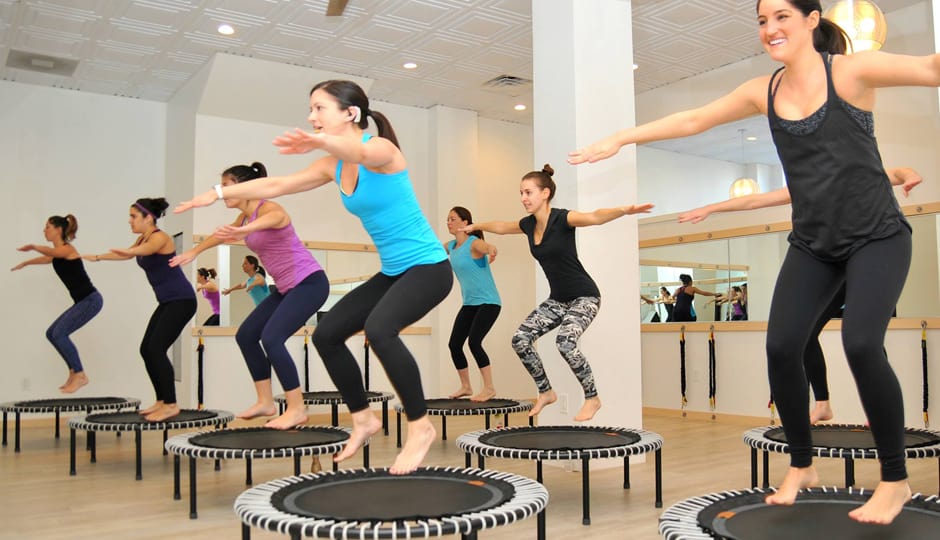Does Rebounding Help Circulation?
Do you know that according to the British Heart Foundation, over a quarter (27%) of deaths in the UK occur because of cardiovascular or circulatory diseases, most of which are due to coronary heart disease and stroke? This comes down to 170,000 people a year who die from heart and circulatory diseases. Out of these patients, 44,000 are under 75.
Considering the statistics, it is crucial to start looking after your heart and circulatory health as early as possible. But, the good news is that we can protect ourselves from circulatory diseases by increasing physical activity.
But does rebounding help circulation? Lack of movement is one of the biggest causes of poor circulation; simply adding some gentle exercises like rebounding to your daily routine is an excellent way to maintain circulation.
In the human body, blood is circulated throughout the body with the help of the circulatory system. Whilst most exercises promote circulation, rebounding has a very potent effect on blood circulation. The up and down motion during rebounding stimulates and affects all body parts simultaneously.
As all the muscles in the body contract and relax periodically, this contraction and relaxation cause the blood to have a wavelike effect on the body – making it circulate blood with higher efficiency. All body parts function more proficiently with the stable flow of pure oxygenated blood to all extremities.

Is Jumping On a Trampoline Good For Circulation?
Rebounding increases muscle contractions and subsequently improves lymphatic and blood circulation. The function of blood is to circulate throughout the body and ensure that oxygen and other nutrients reach each part of the body.
Also, detoxification is another essential function where toxins must be removed from the circulating blood. Waste accumulation in the body negatively affects your mood and results in loss of serotonin and insulin. The circulatory system is driven by the heart.
While rebounding, you can usually feel that your heart starts to beat faster within a few seconds and also, you may notice reddening of your cheeks. As the intensity of the exercise increases, your heart needs to work harder, pumping the blood more vigorously to enable more oxygen to reach the muscles.
These are signs that your circulatory system is working well and that more blood is moving around the body.
Can Rebounding Help With Blood Clots?
Rebounding can prevent blood clots because blood clots result from long periods of inactivity; a regular exercise routine using a rebounder helps reduce the risk of diabetes, obesity and blood clots.
The human blood is composed of chemicals which enable the blood to clot in case of an injury to prevent excessive blood loss.
Despite this benefit, blood clots may cause damage to the circulatory system. While most blood clots don’t immediately threaten your health, frequent clotting must be addressed immediately. Circulation of the blood properly is critical to blood clot prevention.
Blood clots result from long periods of inactivity; a regular exercise routine helps reduce the risk of diabetes, obesity and blood clots.
According to a study by American Heart Association, obese people are at an increased risk of blood clots and diseases such as stroke. This study helps explain why these complications occur in obese people, and just doing simple exercises like rebounding can help dissolve blood clots.
People diagnosed with a blood clot have different levels of physical ability and fitness during and after recovery. Some people may return quickly to normal mobility and fitness routines, while others may struggle to carry on with their usual way.
Getting started with exercise after having blood clots is hard work for some people, and for some, it may seem next to impossible.
Rebounding is a kind of intense cardiovascular exercise which increases the heart rate. A sudden rise in the heartbeat can be dangerous for people suffering from hypertension; the idea is to start slowly and increase the exercise intensity over time.
Some people develop a condition called DVT (deep vein thrombosis). In this condition, the blood clots break away and travel to the lungs, causing a pulmonary embolism (PE).
People with DVT worry that exercise could shake their clots free, but the truth is that exercise helps circulation and eases symptoms of venous insufficiency. Venous insufficiency is when blood cannot reach the heart properly.
Rebounding helps your lungs to work better after a pulmonary embolism. Strong muscles in your legs help squeeze veins to push the blood upward. An injury or surgery may slow down this blood circulation, and weakness in leg muscles or inactivity contributes to clot formation.
Rebounding improves the efficiency of the heart by increasing the heart rate. However, rebounding for people suffering from lower blood pressure isn’t entirely risk-free.
The risk is much higher if the blood pressure rises above 180/100. This increase in heart rate can be taxing for the heart muscles.
The key message is that rebounding can prevent blood clots, positively affecting our circulation.
But before trying to kick start an exercise regime, it is essential to consider individual health and only go ahead after the consent of a qualified healthcare professional.


2 Comments